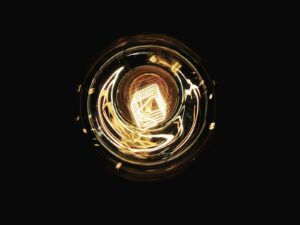University of Liverpool engineers have built an eco-friendly timber building that does not use any adhesives in the construction process.
The timber structure uses timber to reinforce timber without using adhesives, which can be damaging for the environment.
Engineers designed and constructed a large section of the office space using adhesive-free laminated timber (AFLT) beams and adhesive-free cross laminated timber (AFCLT) panels. They used densified wooden dowels and plates to connect the beams with columns rather than metallic fasteners.
The dowels and plates are made using softwood from sustainable harvested timber and compressed using a heated hydraulic press to reduce thickness whilst making it denser and stronger than common hardwood.
The ‘green’ office, which is part of an EU-funded INTERREG research project, will allow researchers to evaluate the performance of adhesive-free engineered wood products and compressed wood fasteners in a real life environment over the next five to ten years, and compare it to conventional methods that use adhesives and metal.
Located at Ness Gardens in Liverpool, the 35m2 office structure will provide a functional workspace for researchers from the University’s Institute of Integrative Biology using the Brian Moss Aquatic Facility, one of Europe’s largest, most technologically advanced facilities for investigating environmental impacts on freshwaters.
Liverpool engineer and project lead, Dr Zhongwei Guan said: ‘This is an exciting real world project. The structure we have designed and built is arguably the first building in the world to be constructed using this compressed wood technology!
‘It showcases a more environmentally-friendly method of connecting wood and joining structures using compressed wood dowels and fasteners without the use of adhesives or metal products.
‘The prototype has been developed as part of our INTERREG EU research project to design, demonstrate and take forward new adhesive-free engineered wood products for use in the construction industry.’
Dr Stewart Plaistow, senior lecturer in Evolutionary Biology in the Institute of Integrative Biology, added: ‘I am delighted that this new facility which will support research projects investigating the effects of climate change on shallow fresh waters.
‘The new space will allow researchers to process samples on site, enhancing the mesocosm facilities capabilities even further. It’s been a real pleasure seeing “green” research projects from different faculties working together.’
Photo Credit – the University of Liverpool












